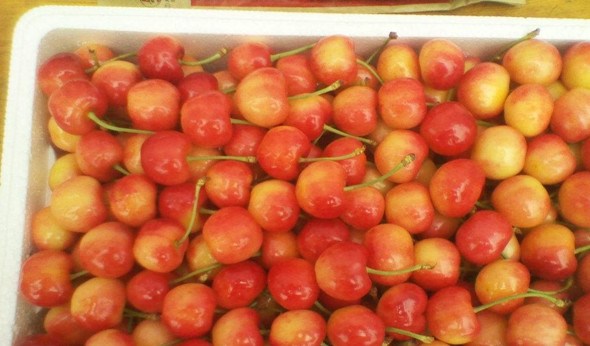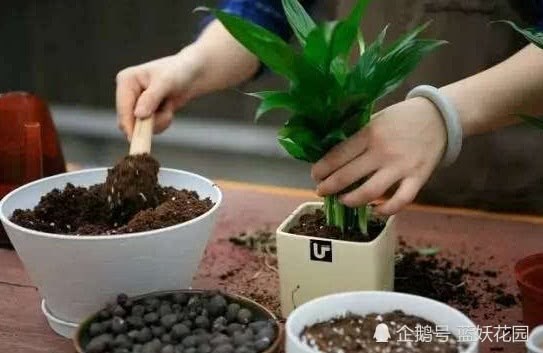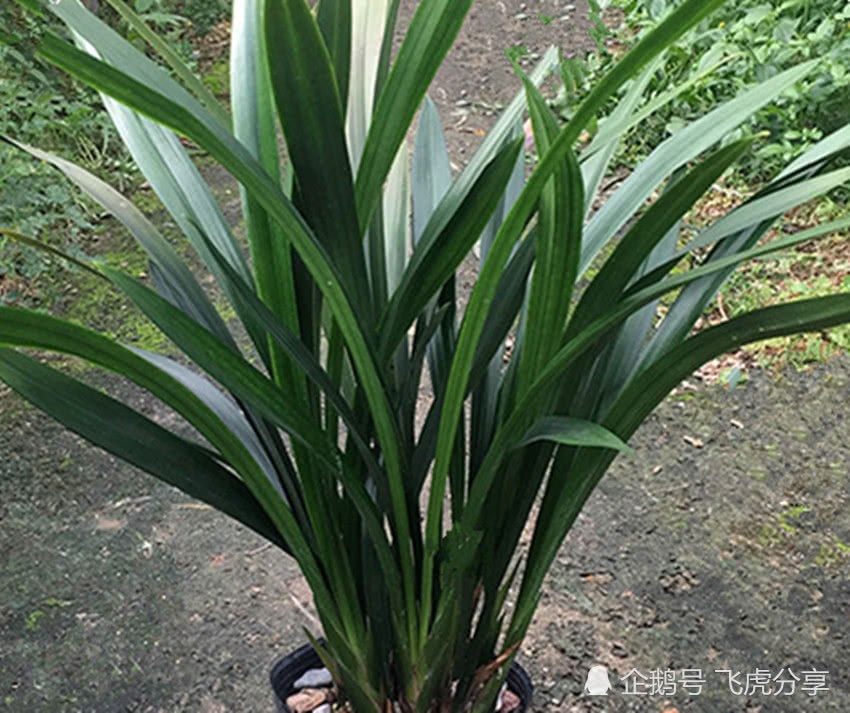What kind of soil do cherry trees like? What are the planting requirements for big cherries?

Big cherry is a common fruit variety in our life, which is rich in nutrition, good taste and good market prospect. In recent years, there are more and more big cherry growers, and the popularization of planting requirements and techniques of big cherry is becoming more and more important. The following editor will talk to you about the requirements of big cherry trees for temperature, soil, moisture, light and so on.
I. requirements for planting environment of big cherry trees
1. Temperature
The flower buds of big cherry began to germinate when the daily average was more than 10 ℃, began to blossom when more than 15 ℃, grew fastest when the new shoot was above 20 ℃, and ripened after 50-60 days at 20-25 ℃. When the average temperature of the day is below 5 ℃, the leaves begin to fall and go into dormancy. Big cherries are not resistant to frost and are vulnerable to frost damage if they are cold in late spring.
The tolerance of big cherry to low temperature was also different at different stages from sprouting, flowering to young fruit growth, such as-5.5 ℃ ~-1.7 ℃ at flower bud stage, and-2.8 ℃ ~-1.1 ℃ at flowering stage and young fruit stage. If the temperature drops sharply, the flower buds will suffer frost damage of 96-98%, but only 3-5% of the flower buds will be frozen if the temperature drops slowly. In addition, the freezing degree of big cherry is directly related to the nutrient storage content in big cherry trees.
Therefore, strengthening the management level of nutrient storage content in big cherry trees is also an important measure to prevent frost injury.
2. Soil
Big cherry is suitable to be cultivated on sandy soil with deep soil layer, loose soil and good ventilation. If cultivated on the soil with poor drainage, heavy stickiness and consolidation, it will result in weak tree growth, shallow root distribution, neither drought and waterlogging resistance nor wind resistance. Large cherry trees grafted with Mahari cherries as rootstocks, especially avoid sticking to heavy soil. Big cherry is sensitive to soil salinization, so big cherry can not be cultivated in saline-alkali soil. The suitable soil acidity and alkalinity is PH5.6-7. 0.
3. Moisture
Water is an indispensable condition for the normal growth and development of big cherry, but because the root of big cherry needs high oxygen concentration and is very sensitive to hypoxia, it is also very sensitive to soil water content. When the soil moisture is too high, it is not only easy to cause branches and leaves to grow, which is not conducive to the fruit, but also cause insufficient oxygen in the soil, affect the normal respiration of the roots, rot the roots seriously, flow glue from the aboveground parts, and finally lead to the weakness and death of the trees. When the soil moisture is low, especially in summer drought, insufficient watering, not only the growth of new shoots is inhibited, resulting in premature senescence, the formation of "small old trees", low yield, poor fruit quality, but also lead to a large number of fruit drop.
4. Lighting
Big cherry is a light-loving tree. Under the condition of good light, the tree is strong, the life of fruit branches is long, the flower buds are full, the fruit setting rate is high, the fruit ripens early, the color is good, and the fruit has high sugar content. If the light condition is poor, the outer shoot of the crown is easy to grow, the branch within the crown is weak, the life of the fruit branch is short, the fruiting part moves outward, the development of flower bud is not full, the fruit setting rate is low, the fruit ripens late and the quality is poor.
5. Wind
The wind has a great influence on the cultivation of big cherry. Severe winter wind is easy to cause branches to dry, flower buds frozen; flowering wind easy to dry flower stigma mucus, affecting insect pollination; autumn typhoon will cause big cherry branch lodging, seriously affecting the storage of tree nutrients.
2. Planting and management techniques of big cherry trees
1. Techniques for improving the fruit setting rate of big cherries.
According to the research, the main factors affecting the fruit setting rate of cultivated cherry are as follows:
First, the quality of flower bud differentiation and development is poor, resulting in female abortive flowers after flowering; second, nutrients are not balanced, which is beneficial to flower bud differentiation and fruit setting; third, the variety and quantity of pollination trees are unreasonable; fourth, improper water and light management; fifth, diseases and insect pests (such as viruses, glue, etc.) reduce the tree potential.
2. Shaping and thinning technique of big cherry.
Shaping and thinning branches and improving light conditions of big cherry are very important to improve fruit quality and yield. However, in the process of pruning, special attention should be paid to the following points:
The main results are as follows: (1) the branches of big cherries are easy to split, and the branches with small angles should not be used as main branches. Therefore, those with small angles should be removed as soon as possible.
(2) the wound that removes the big branches during winter pruning is not easy to heal, and it is easy to flow glue. Therefore, it is suitable for thinning in the growing season or after harvest, fast healing and not easy to flow glue. When dredging, the wound should be flat and small, leaving no piles. The most avoid leaving "Chaotian scar" wound, this kind of wound is not easy to heal, easy to cause wood decay.
(3) the ring peeling technique should not be used in big cherry, because it is easy to flow glue and break after ring peeling.
(4) 3-5 whorled branches often appear on the long branches of big cherry, which should be removed during the dormant period in the year in which they occur, and a maximum of 2-3 should be retained. If the wound is removed too late, it is easy to flow glue, which is disadvantageous to growth.
(5) although winter pruning can be carried out during the whole dormant period, the later the better, which is generally close to the pruning of buds. If you trim early, the wound will lose water and dry up.
(6) there are common problems in the cultivation and pruning of big cherry:
In the shaping of young trees, it is common to have too many short cuts, long years and many big branches, resulting in dense branches, poor lighting conditions and disordered tree shape. When transforming this kind of tree, we should not kill and cut it down, and the big branches that need to be removed should be gradually removed year by year.
Regardless of the variety in the fruit tree, it all retracts.
The strength of the tree is pruned in one way. For trees that are growing well, they should be released slowly, and if they are cut back, they may become more and more prosperous; for trees with weak growth and a small number of fruits, they should be properly retracted, and if they continue to slow-release, they will blossom without setting fruit.
Regardless of the growing season and paying no attention to the tree age stage, the same pruning method was used. For young fruit trees, in addition to appropriately shortening the extended branches of the main branches according to the requirements of shaping, promoting new shoots to expand the crown, the other medium and short branches should not move as far as possible, so that the trees can grow and bear fruit ahead of time. In terms of long-term interests, young trees mainly cultivate tree shape, and cultivate fruiting branch groups on the basis of cultivating tree shape.
Third, the management technology of big cherry orchard
1. Supplementary application of base fertilizer
The big cherry orchards without base fertilizer in autumn should be replenished in spring. In general, 100 kg of farm manure is applied to each fruiting tree, and the amount of fertilizer used for small trees is halved. The method of fertilization can be in the shape of ring or shoot-shaped ditch.
2. Prepare stone-sulfur mixture
Boil according to the proportion of 1 part of quicklime, 2 parts of sulfur powder and 10 parts of water.
3. Ploughing in watering
Common watering once permeable, and after watering timely ploughing, intertillage depth of about 6 centimeters is appropriate.
4. Continue to prevent cold and resist freezing
Spray the above-mentioned cold-proof and anti-freezing four-in-one solution at one time; in areas where late frost (late spring cold) is more likely to occur, it can also be combined with watering before flowering to postpone the flowering period and avoid freezing damage during the flowering of big cherries.
5. Loosen the soil and preserve soil moisture
After watering, the soil should be loosened in time to preserve soil moisture.
6. Pick the heart
Early heart removal was carried out within 7-10 days after flowering.
7. Topdressing after anthesis
After the cherry is seated, foliar topdressing and root topdressing should be carried out. Foliar topdressing can use "sugar alcohol calcium."
8. Summer pruning
At this time, the pruning work is still heart-picking, that is, before the end of the branch is lignified, the first part of the new shoot is removed.
9. Watering
After the cherry blossoms sit down, the fruit is about to ripen in a month and require a lot of water, so it should be watered every 7 days from Xiehua to harvest.
10. Pest control
Control cherry leaf spot, scab and other diseases; spray 1500-2000 times of mites or 1000 times of solution to control red spiders, aphids, shell insects and other pests. Spray every 10-15 days, pay attention to cross-medication each time.
11. Fruit harvest
Early-maturing varieties are generally harvested in mid-May, and then mid-and late-maturing varieties are harvested one after another. Big cherries should be harvested with fruit stalks, and pay attention to picking and handling gently to avoid loss.
12. Topdressing after harvest
Big cherry should be fertilized in time after harvest, which is beneficial to the ratio of flower buds. Topdressing the roots within one month after harvest, applying 0.5 kg of "Ahimi" to each fruiting tree, watering in time after topdressing, and applying a certain amount of mineral fertilizer (Aize silicon, calcium and magnesium) to provide trace elements for crops according to the situation.
One is to pick the heart, and the new tip is kept 30-40 cm.
The second is to twist the tips, twisting and sagging the semi-lignified shoots. The erect branch, competitive branch and introverted temporary branch on the back will be twisted 180 degrees gently at about 5 cm from the base of the branch, so that there are some cracks in the xylem and phloem without breaking, and the sprained part can be completely healed in autumn.
Third, take the branch, start the Lignified branch from the base, bend it by hand, and then bend it up every 5 centimeters until the end. If the branch grows too vigorously, it can be taken many times in a row, and the branch can be bent horizontally or drooping.
The fourth is to pull branches, which should be carried out after harvest in order to adjust the angle of backbone branches, ease the tree potential and promote early fruit setting.
Fifth, branch thinning and retraction, for strong and strong branches that seriously affect ventilation and light transmission in the crown and have no retention value, can be removed from the base, and large branches that only affect local light conditions but have a certain ability to bear fruit can be shrunk at the branches.
The sixth is to break the buds and break off the double buds and overdense buds.
1. Winter plastic surgery
Big cherry trees can be dry and happy natural shape or trunk sparse layer shape.
Happy natural planting left 80 cm fixed stem in the same year, and 3-5 short branches of lateral oblique well-developed branches were selected as main branches in the second year, with a cutting length of 40-50 cm. In the third year, only the extended branches of the main branches were truncated, and the other branches were immobile or heavily truncated, and the fruiting branches were cultured. Note that the cuttings leave lateral buds.
The height of the trunk is 80 cm. In the second year, 3-5 well-developed branches are selected in the spring, and the cutting length is 50-60 cm. In the third year, the trunk and the main branch continue to be truncated. The competitive branch formed by the second bud should be truncated, leaving about 35 cm. The branches formed by the third and fourth buds should be inverted, leaving about 40 cm short, and other branches that are too dense and not ideal in direction and angle. It should be truncated or removed appropriately.
2. Winter pruning of fruit trees
After the big cherry enters the fruiting period, it is necessary to maintain the tree shape and the ability to keep the fruit. for its annual developing branches, except those that are too prosperous, they should not be cut short, and their terminal buds can be removed or pruned at the joint between spring and autumn shoots, so as not to prolong its growth and promote leaf clumps to bear fruit in a certain range. The lateral buds in the lower part of the developing branches also bear fruit, but the amount of fruit is small, and the fruit should be kept where there is space. To the bouquet of fruit branches, do not move, in order to promote its continuous fruit.
3. Clean up the orchard
Clear the pruned branches out of the orchard in time.
- Prev

Don't throw away the old soil after the pot has been changed. It can be used again.
0066, do not throw away the old soil after changing pots. With such a treatment, you can use it again. Planting flowerpot soil is always a headache, especially when you have to change the pot every year, a lot of the old soil is lost, and it takes great effort to get new.
- Next

A small detail in the cultivation of gentleman orchids, orchids and succulent plants determines whether they can be raised well.
Home breeding gentleman orchids, orchids, succulent plants, usually need to change pots in about two years, just bought these flowers also need to change pots. But it is a small detail in changing the basin, but many people ignore it. That's exactly what it is.
Related
- Wuhan Hospital Iron Tree Blooming Result Was Instantly Frightened by the Gardener Master
- Which variety of camellia is the most fragrant and best? Which one do you like best?
- What is the small blue coat, the breeding methods and matters needing attention of the succulent plant
- Dormancy time and maintenance management of succulent plants during dormancy
- Minas succulent how to raise, Minas succulent plant pictures
- What are the varieties of winter succulent plants
- How to raise succulent plants in twelve rolls? let's take a look at some experience of breeding twelve rolls.
- Attention should be paid to water control for succulent plants during dormant period (winter and summer)
- Watering experience of twelve rolls of succulent plants
- Techniques for fertilizing succulent plants. An article will let you know how to fertilize succulent plants.

